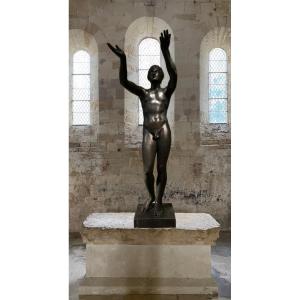Very faithful copy from the antique original and beautiful patina also made by the Louvre workshops. The statue is in very good condition.
(Note that the simple iPhone that I use for photos distorts the volumes and in particular the arms seen from the front).
height 144x 45x57 cm
Base 10x45x45 cm.
The Praying Boy (in German, Der betende Knabe), also known as the Berlin Adorant or the Berlin Adorer is an ancient Greek bronze statue of a naked young man with raised arms, which measures 128 cm (50 in.) high. Carved in a Hellenistic style, it is dated to around 300 BC and attributed to the school of Lysippus. It is preserved by the Altes Museum in Berlin. The incomplete bronze statue, initially lacking arms and legs, was discovered on the island of Rhodes in the late 1400s, during the construction of the city walls. He arrived in Venice in 1503. The left leg was recovered and reunited with the head and torso in the 16th century. The statue has circulated in several prominent art collections, including those of Count Mario Bevilacqua in Verona, Duke Vincenzo Gonzaga in Mantua, and the royal collection of Charles I. The arms are reconstructions commissioned in the 17th century by Nicolas Fouquet, the last superintendent of finances of King Louis XIV. The restored statue was exhibited at Château Fouquet in Vaux-le-Vicomte. It then passed into the collections of Prince Eugene of Savoy and Prince Wenzel of Liechtenstein. It was sold to King Frederick II of Prussia in 1747, who exhibited it on a terrace of the Sanssouci Palace in Potsdam until 1786, when it was moved inside the Stadtschloss in Berlin. It was confiscated by Napoleon in 1806 and exhibited at the Musée Napoléon in Paris. It was purchased and donated to the collection of the Altes Museum. It was transported by Soviet authorities to St. Petersburg for a period after World War II, but returned to the East Berlin museum in 1958 along with other antiquities, including the Pergamon Altar. Many repairs have been necessary over the past 500 years, including replacing parts of the feet and toes. The position of the restored arms has led to the statue being interpreted as praying, but no interpretation is universally accepted. It has been suggested that the statue could represent Apollo or Ganymede, or perhaps an athlete or a shepherd. It may be part of a larger sculptural group. Metallurgical analysis indicates that the statue was made in the Hellenistic period. Stylistic similarities with a bust of Demetrius I of Macedon in Naples indicate that the statue may have been made by Teisikrates, grandson of Lysippus, around 300 BC. Others attribute it to Boidas, a son of Lysippus, based on a reference to a statue of a praying boy mentioned in Pliny's Natural History.







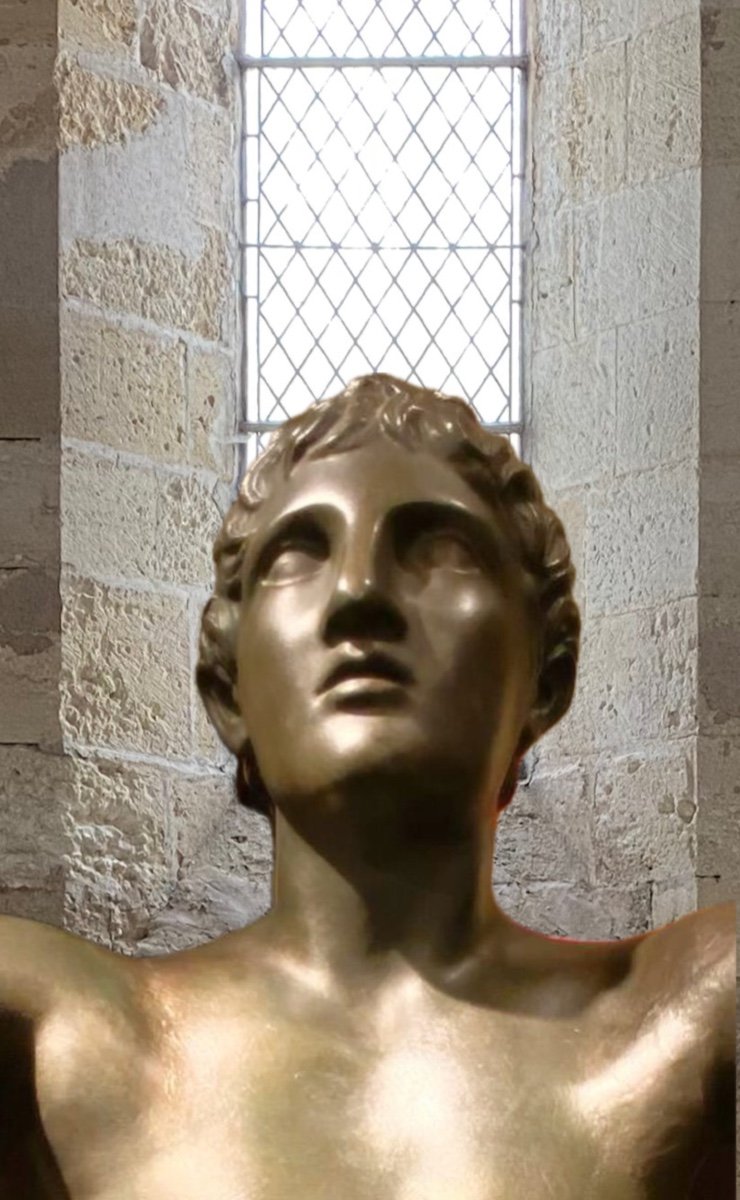

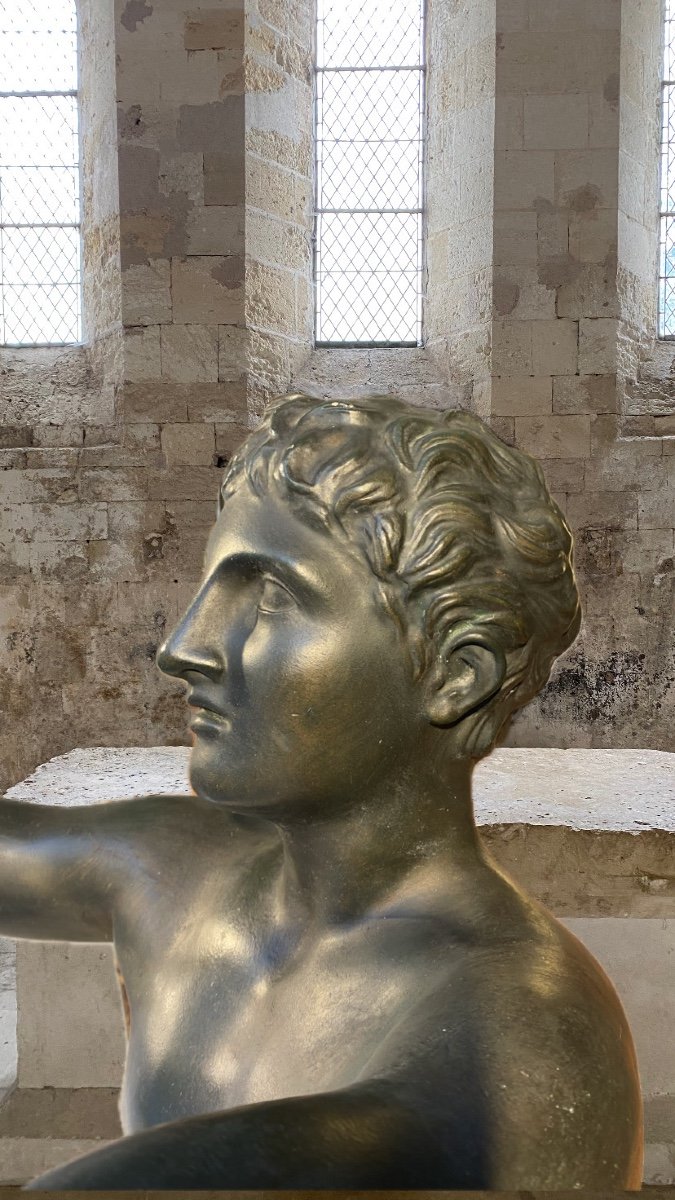
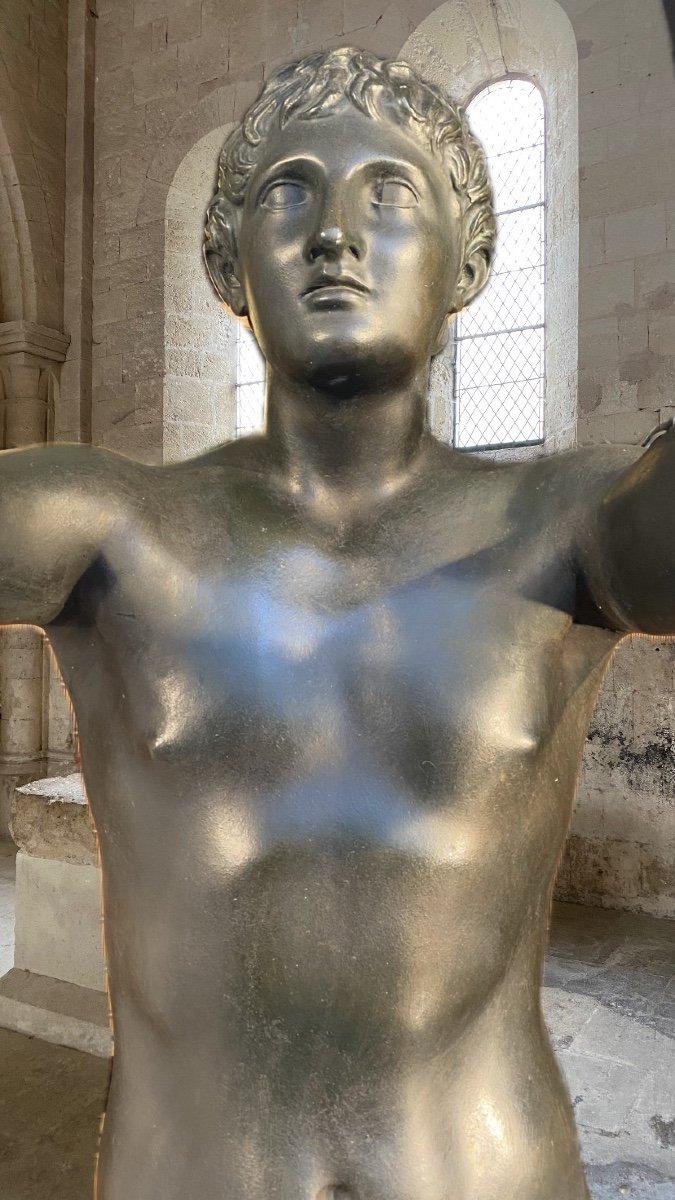

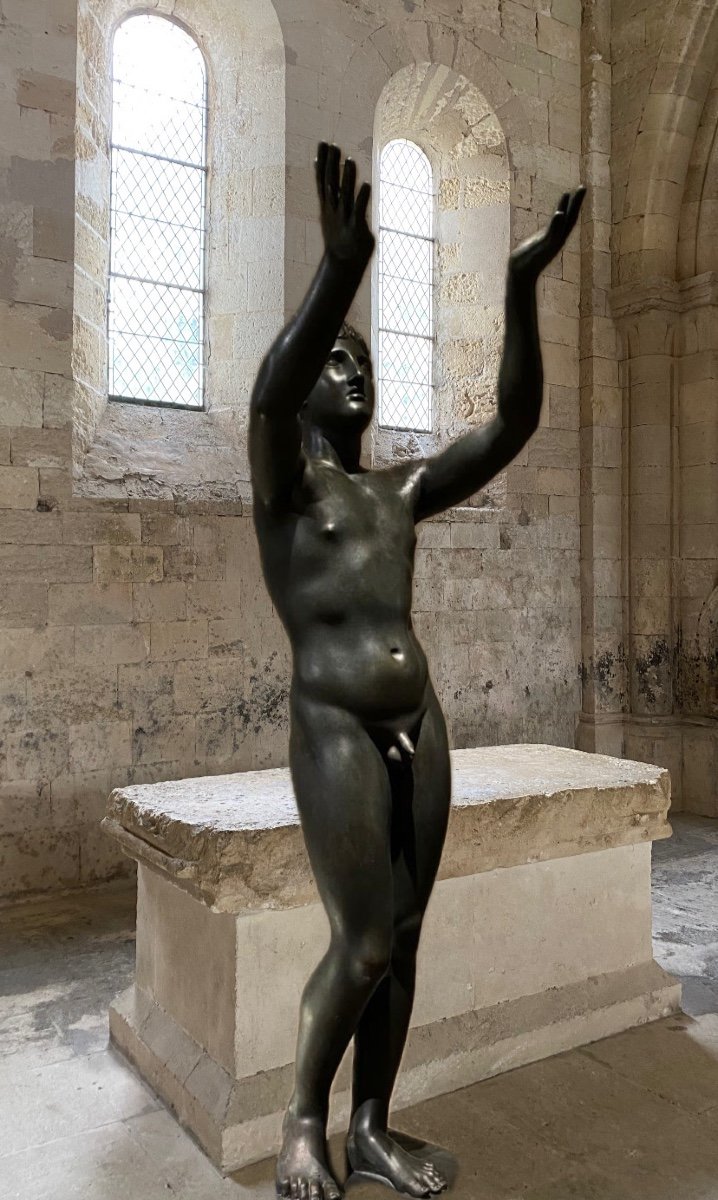
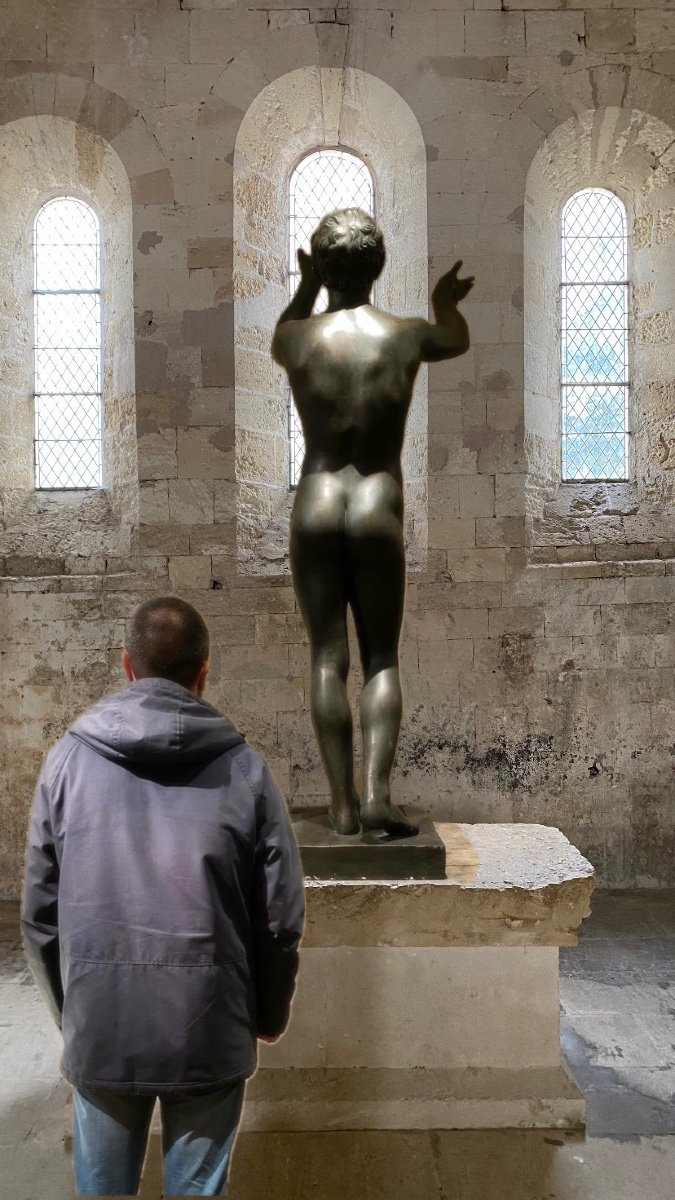

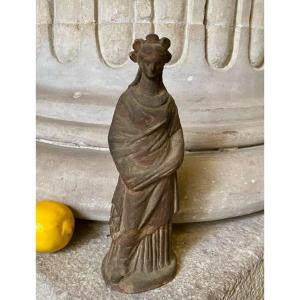

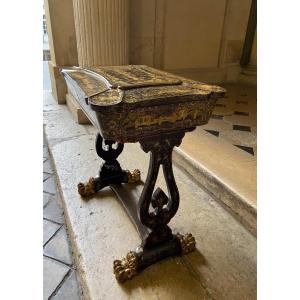
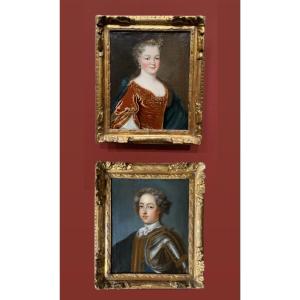




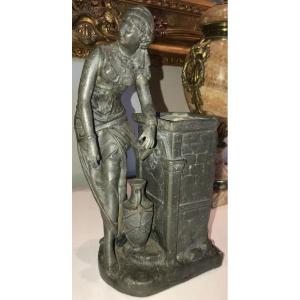
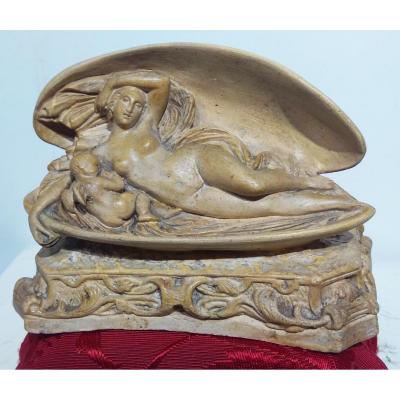

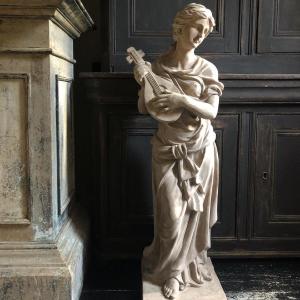



 Le Magazine de PROANTIC
Le Magazine de PROANTIC TRÉSORS Magazine
TRÉSORS Magazine Rivista Artiquariato
Rivista Artiquariato
